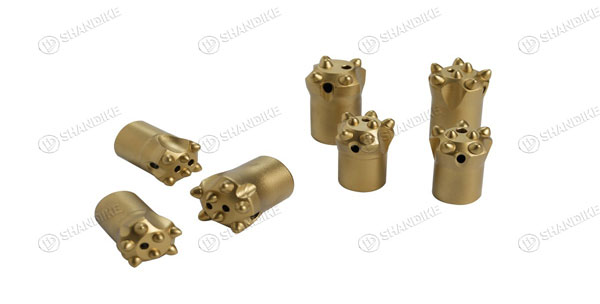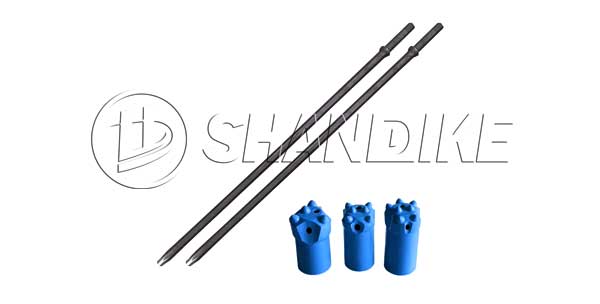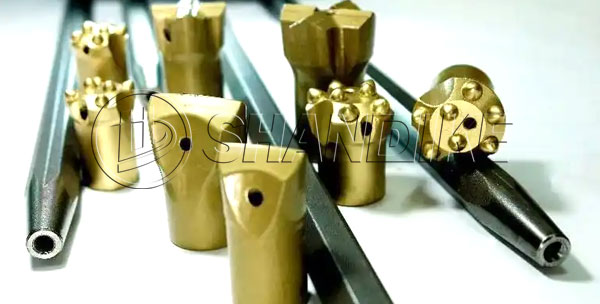Reasons for T38 drill rod fracture in hard rock formations
Frequent fracturing of drill pipes in hard rock formations is a complex technical problem, often caused by multiple factors working together. The following are the main reasons and corresponding preventive measures:

1. Analysis of the cause of fracture1. Material and manufacturing defects-Reason: Insufficient strength of drill pipe material (such as low-quality steel), internal cracks, improper heat treatment, or defects in threaded connections.
-Performance: The fracture surface exhibits brittle fracture characteristics (such as a flat section) or fatigue crack propagation traces.
2. Excessive mechanical stress- Reason :
Hard rock formations have high compressive strength, requiring greater drilling pressure and torque during drilling, resulting in overloading of drill pipes.
The wellbore trajectory is complex (such as excessive dogleg angle), and the drill pipe is subjected to alternating bending stress.
-Performance: Fractures often occur at drill pipe joints or threaded connections.
3. Cumulative fatigue damage- Reason : Severe vibration occurs during hard rock drilling, and the drill rod is subjected to high-frequency alternating loads for a long time, causing fatigue cracks.
Performance: Shell like fatigue lines can be seen on the fracture surface, and cracks gradually propagate inward from the surface.
4. Wear and corrosion- Reason :
Friction between the wellbore and drill pipe causes wear on the outer wall, especially in hard rock where the wear rate is high.
The corrosive components of drilling fluid, such as H ₂ S and CO ₂, accelerate stress corrosion cracking.
Performance: The wall thickness at the fracture site is significantly reduced or there are corrosion pits present.
5. Improper operation- Reason :
Unreasonable settings for drilling pressure and rotational speed parameters (such as blind pressurization in hard rock).
Failure to timely replace worn drill pipes or handle abnormalities in the well (such as forcibly pulling after stuck drilling).
Performance : Sudden rupture accompanied by abnormal operation records.
2. Preventive Measures1. Optimize drill pipe selection and design-Select high-strength alloy steel (such as S135 grade drill pipe) to enhance tensile and fatigue resistance performance.
Use thick walled drill rods or weighted drill rods (such as HEVI-WATE drill rods used for deep well hard rock).
Improve the design of threaded connections (such as double shoulder joints) to reduce stress concentration.
2. Reasonably control drilling parameters-Adjust drilling pressure and rotation speed according to rock type to avoid blind pressure in hard rock (refer to rock drillability classification).
Real time monitoring of torque, vibration, and other parameters using downhole measurement while drilling (MWD) tools to dynamically optimize operations.
3. Reduce vibration and impact-Install shock absorbers or shock absorbers to absorb high-frequency vibration energy.
Use PDC drill bits or impregnated diamond drill bits (for hard rocks) to reduce impact loads.
4. Strengthen maintenance and testing-Regularly conduct non-destructive testing (such as ultrasonic testing, magnetic particle testing), and replace immediately if cracks or excessive wear are found.
Strictly record the usage duration and cumulative fatigue cycle of drill pipes, and implement life management.
5. Optimize wellbore trajectory and drilling fluid performance-Control wellbore curvature (dogleg angle<5 °/30m) to reduce bending stress.
Use high lubricity drilling fluid (such as oil-based mud) to reduce friction coefficient and minimize wear.
6. Operator training-Develop drilling standards for hard rock formations to avoid unauthorized operations such as hard lifting and sudden release.
Train personnel to identify early fault signals (such as sudden torque changes and abnormal pump pressure).
III. Case AnalysisThe key measure to reduce the frequency of drill pipe fracture by 80% in a deep hard rock geothermal well project is:
Adopting S135 grade drill pipe with double shoulder joints to enhance fatigue resistance;
Introduce a downhole vibration monitoring system to dynamically adjust the rotational speed;
Perform magnetic particle testing on the drill pipe every 200 hours of drilling and replace the hidden drill pipe in advance.
SummaryThe fracture of drill pipes in hard rock formations is the result of the synergistic effect of materials, mechanics, and operations. Prevention needs to start from multiple dimensions such as design selection, parameter optimization, detection and maintenance, combined with real-time monitoring and standardized operation, in order to significantly reduce the risk of fracture.



